
How to Grow Cacti and Succulents
This diverse group of plants are surprisingly easy to grow and need little maintenance. They make great plants for beginners and always attract interest for their curious shapes and structures.
How to Grow Cacti and Succulents
This diverse group of plants are surprisingly easy to grow and need little maintenance. They make great plants for beginners and always attract interest for their curious shapes and structures.
These marvels of the plant world are renowned for their ability to survive the worlds driest habitats. Cacti and succulents have one thing in common the ability to store water and use it extremely efficiently.
These tough plants have certain adaptions that make this possible. Take a look at the fleshy foliage of succulents - the leaves are sponge-like inside with a thick waxy covering that reduces water loss from their stomata (skin pores). Chop open a Cactus and you will find the same fleshy interior.
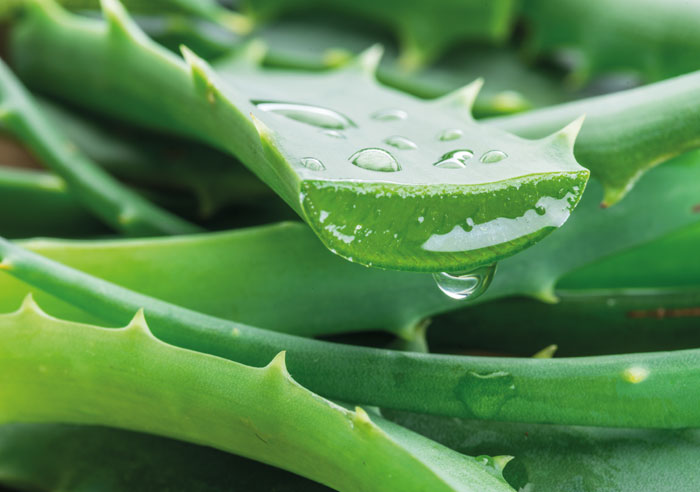
These plants even use a different process of photosynthesis called Crassulacean acid metabolism (CAM). This is a far more efficient process than normal photosynthesis, using much less water. Unlike most plants, CAM allows them to only open their stomata at night when temperatures are far cooler, thereby reducing water loss.
Although most Cacti originate from dry climates, there are a few exceptions. Epiphytic species such as Schlumbergera and Epiphyllum (Christmas/ Easter Cactus and Orchid Cactus) grow on trees in rainforests where conditions are more humid and shaded.
Cacti and succulent houseplants
Many of this diverse plant group look fabulous when displayed together, either as a row of plants or potted into one shallow container. Given their slow growth rate, they make well behaved houseplants that won't outgrow their welcome, even after many years.
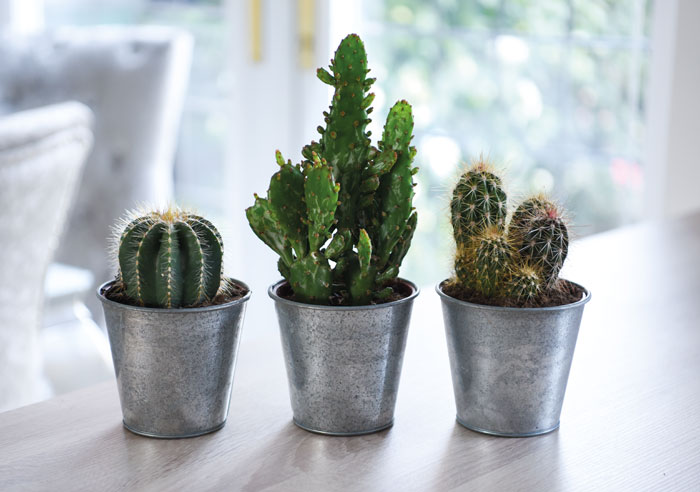
Larger specimens, such as Aloe vera and Euphorbia abyssinica, and Sansevieria trifasciata var. laurentii are best displayed individually to create a dramatic focal point.
If you have the time, you can even grow cacti from seed! Patience is required as germination may take several months and growth thereafter can be very slow, but the reward of your own home-grown plants can be very satisfying.
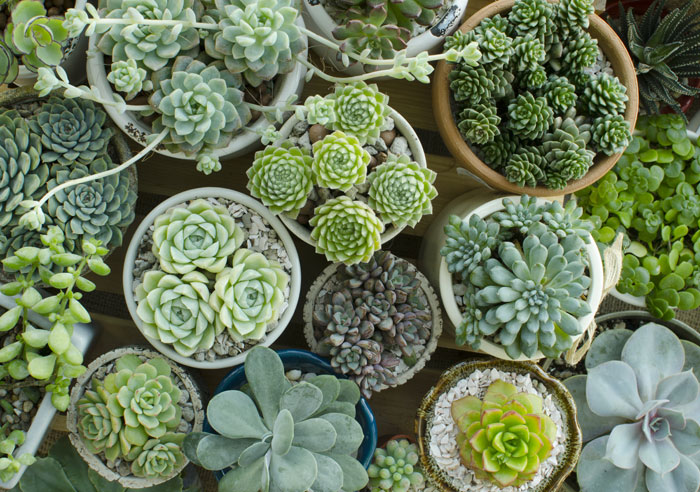
Temperature and position
Cacti and Succulents make superb house plants, which require very little maintenance. Most will thrive in a sunny spot with relatively, low humidity so they are perfect for a sunny windowsill. In the UK, most cacti and succulents are tender plants needing a minimum temperature of 10C (50F). They can tolerate centrally heated rooms in winter, but care should be taken to prevent them becoming too dry.
Soil
Most cacti and succulent house plants will survive in the pot they are supplied in for quite some time. When they do finally need repotting, use a free draining soil mix of John Innes No. 2 mixed with fine grit at a ratio of 7 parts compost : 3 parts grit.
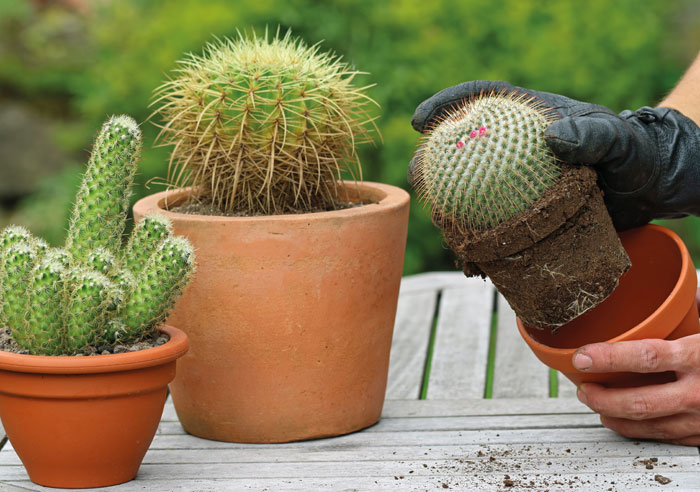
Repotting is best undertaken in Spring. To avoid being prickled, you may want to use a pair of tongs to hold your Cactus when re-potting
Water
Cacti and succulents flourish when their growing conditions mimic nature. A summer rainy season followed by a dryer winter rest period will encourage your plants to thrive and even flower with maturity.
Your cacti and succulents can be watered freely from April to September to recreate rainy season conditions. Ensure that they are allowed to drain thoroughly after each watering. Allow the compost to dry out a little between each watering, and ensure that the area is well ventilated with plenty of fresh air. If possible, use rainwater rather than tap water to prevent a build-up of minerals in the soil.
During the winter months, most cacti and succulents require a rest period. Reduce watering from September onwards, allowing the compost to dry out in between each watering.
Winter flowering species are the exception to these rules. They will require a wetter winter and a dryer summer season, with a higher level of humidity than desert types.
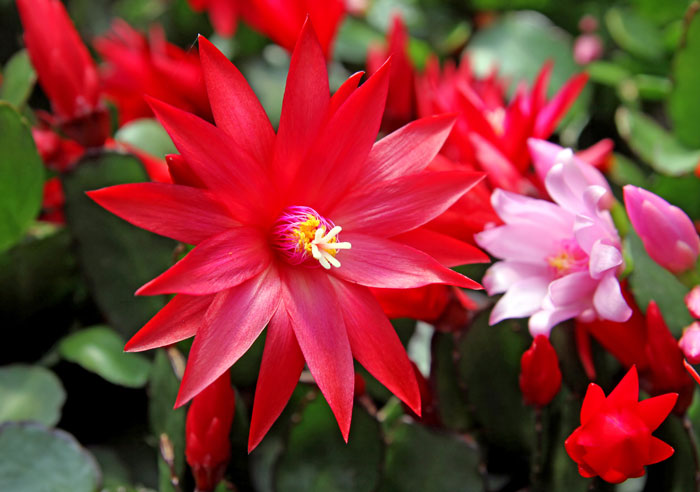
Fertiliser
Cacti and succulents will benefit from a liquid feed once a month from April to September. Use a specialist liquid fertiliser to see the best results. There is no need to feed during their winter resting period.
Growing Cacti and Succulents outdoors
There are plenty of hardy succulents, such as Sempervivum (Houseleeks) and Sedums which are hardy enough to survive outside, all year round.
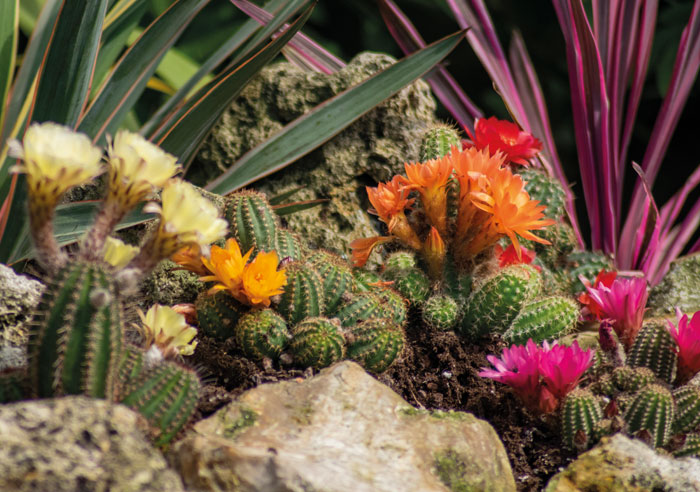
There are even some species of hardy garden Cactus that will survive outdoors in the UK, all year round. Echinopsis hybrids can cope with temperatures down to -7C (19F). They will require excellent drainage and protection from particularly cold, wet conditions. This can be best achieved if plants are grown in shallow containers or troughs which can be moved to dry location over the winter months.
Whether you opt for an indoor display or prefer to see them in the garden, there are a wealth of different cacti and succulents to choose from.

Written by: Sue Sanderson
Plants and gardens have always been a big part of my life. I can remember helping my Dad to prick out seedlings, even before I could see over the top of the potting bench. As an adult, I trained at Writtle College where I received my degree, BSc. (Hons) Horticulture. After working in a specialist plantsman's nursery, and later, as a consulting arboriculturalist, I joined Thompson & Morgan in 2008. Initially looking after the grounds and coordinating the plant trials, I now support the web team offering horticultural advice online.Sign Up For Exclusive Special Offers




© 2024 Thompson & Morgan. All rights reserved. A division of Branded Garden Products Limited.




